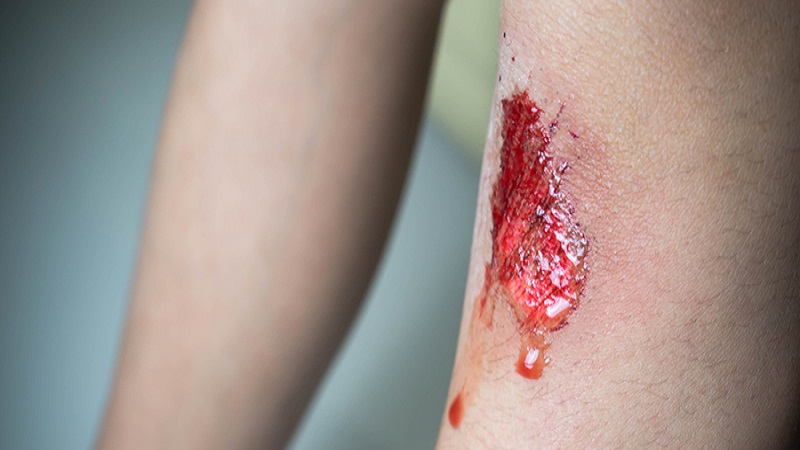About the rare childhood diseases that often occur in most people, there is even the slightest idea. But rare children’s diseases (orphans) are infrequent, they are less likely to hear, knows about them a small circle of people.
What are orphan Rare childhood diseases?
In each country, its indicator, determining whether this disease is rare or not. In Japan it is considered a rare disease if one person is sick by 50 thousand, in the USA – one person by 1,5 thousand, in Ukraine – one person by 2 thousand. The list of such diseases includes more than 20, but every year it is revised and updated. We prepared the top rare diseases in children in Ukraine. Read more: Burn fat with weights or cardio? – Discover the answer
In the protein molecule, there is an amino acid phenylalanine, which is broken down by the liver enzyme. If this enzyme is not present or it is, but in small amounts, the amino acid and its toxic products accumulate and affect the nervous system. In the future, this will lead to mental retardation. At the child from the first days of life sleep, appetite is broken, vomiting is possible. In the future, he lags behind in development. Only early diagnosis and treatment of this disease give good results. Therefore, in maternity hospitals all children without exception in the first days of life take blood, determining the level of phenylalanine. Due to this, children are transferred to a diet in time, which excludes products containing a dangerous amino acid: meat, fish, beans, cottage cheese and so on. In Ukraine, mixtures for newborns with phenylketonuria are sold – “Phenyl-free”, “Tetrafen”. In adolescence, the diet is expanded, since tolerance to phenylalanine is improved. The prognosis of this disease is very good with timely diagnosis and treatment. Read more: 5 types of exercises that will improve your life
Celiac disease
Rare childhood diseases in which the child does not tolerate gluten, which is contained in cereals, since birth. It manifests itself from the first days when the baby is given as complementary food cereals (cereals, cookies, pasta). Begin problems with digestion: diarrhea, vomiting, decreased appetite, underweight in weight. If you do not find the reason in time, it threatens to lag behind in development, violation of the musculoskeletal system, anemia. Symptoms rarely suggest immediately that it is the celiac disease because they occur with a mass of other diseases, which makes diagnosis difficult. To confirm the diagnosis it is possible at analysis IFA on markers of a celiac disease. Treatment is a diet that excludes all foods in which there is gluten: cereal cereals – wheat, barley, from rye, as well as cookies, pasta, semi-finished products with dyes and flavorings. All products should be read carefully for the presence of gluten, especially in children’s lure. The kid really needs vitamins, which are in vegetables, fruits, meat, dairy products, buckwheat, rice, corn. The prognosis of diet is positive.
Gaucher’s disease
It is a disease of accumulation of lipids. And it arises because of the breakdown of the gene, which synthesizes the enzyme beta-glucocerebrosidase. Lipids are not utilized, accumulate in macrophages of the bone marrow, spleen, liver. There are three types of Gaucher’s disease: the first is benign, there are no neurological disorders, can manifest itself in childhood or adulthood; the second – malignant, since infancy is already manifested, and children live only a couple of years; the third is less malignant than the second type, but it is also difficult. Symptoms depend on the type of disease, most often an increase in the liver, spleen, bone pain, anemia. Diagnose with the marker of enzyme activity, in the presence of Gaucher cells in the affected organs. They treat the disease with enzyme replacement therapy, the drug Cerezyme, which is extracted through genetic engineering, but it is expensive and, unfortunately,
This is a hereditary disease that occurs as a result of mutation of the gene that controls the transport of chlorine and other electrolytes, resulting in the secret becoming viscous, the bacterial flora is attached. If both parents are carriers of such a gene, 25% of the probability that their baby will be ill with cystic fibrosis. Symptoms of the disease depend on the form (broncho-pulmonary, intestinal and mixed) and can manifest from birth, or maybe later: bloating, vomiting, unstable stools, coughing, frequent ARVI, pneumonia, bronchitis. As the chlorine is drawn out, the skin is salty, so a sweat is taken for the diagnosis. The earlier this disease is revealed, the better. The therapy is rather complicated and lifelong, you need constant monitoring of the doctor.
Hemophilia
Another hereditary disease, which affects only males, and women are carriers (except type C). The disease is associated with a deficiency of blood factors, as a result – it does not turn well, the result is a prolonged bleeding, a hemorrhage to the joints, between the muscles, under the skin (hematomas). Confirms the diagnosis of a blood test for clotting, a level of factors, molecular genetic studies. When bleeding is administered cryoprecipitate, plasma, blood. In addition to constant monitoring by the doctor, parents should know how to provide first aid for bleeding. If you do not treat the disease, it will lead to disability, a deterioration in the quality of life. Since it is advisable for a child not to work physically, from childhood it is necessary to develop intellectual abilities.
Rare childhood diseases cause difficulties for the life of the patient. They can not always be diagnosed early and on time. Always the first to suspect more private diseases and only after a time when treatment does not help, more typical symptoms appear, you can diagnose. There is also a problem in diagnosis, some analyzes are possible at the regional or capital level in specialized centers.
The problem of treating rare childhood diseases is a separate issue, financing in our country is only partial, most of the expenses are borne by the parents. It also requires constant monitoring of the doctor, follows all the recommendations, then a high probability of a long and quality life of the patient.
It may like also: http://www.npoblogs.net/can-improve-diet-add-years-life/




